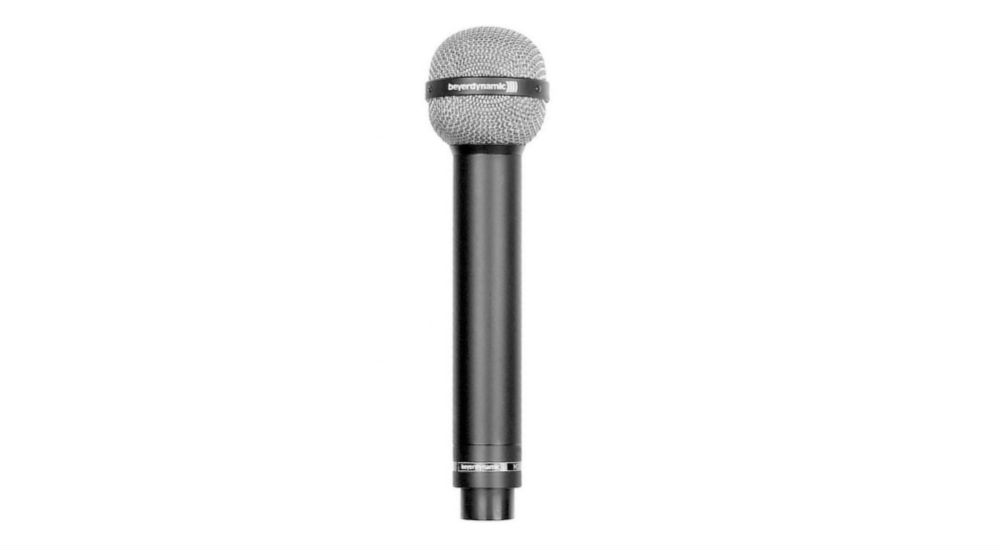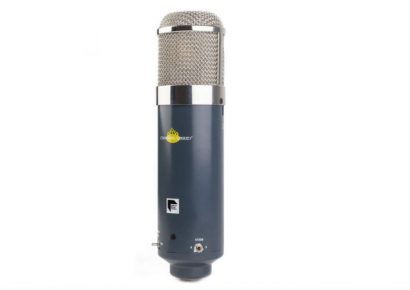For this installment, we’re diving deep into the world of studio microphones, exploring the massive range of ribbon, condenser and dynamic options on the market for savvy producers, engineers and project studio enthusiasts.
Beyerdynamic M160
Category: Ribbon (Passive) | Pattern: Hypercardioid
Key Features: The M160 is a curious microphone, to the untrained eye. A ribbon microphone with a hypercardioid pattern is seldom encountered in the broader audio landscape, with most ribbons tending to be of the Bi-directional variety. While there will always be a place for the figure of eight ribbon mic, the idea of that same highly lauded smoothness, with a more focused, hypercardioid polar pattern makes the M160 a tantalising prospect to say the least.
It goes without saying that the Beyerdynamic M160 thumbs its nose at the concept of the traditional ribbon microphone, a fact which is immediately apparent when you see the microphone – instead of the side-address design we immediately think of when we think ‘ribbon mic’, the M160’s slender, handheld appearance is an outlier; it may well be the only ribbon microphone in existence that doesn’t feel wrong to hold. In fact, it feels great to hold. Weighing about as much as your phone, the M160 has a singular aesthetic unlike anything else in the broader recording space.
Don’t let its handheld nature fool you though: the M160 is far and away more versatile than one might expect. If the C414 is the Swiss Army Knife of microphones, the M160 is more like the Leatherman; less ubiquitous, but armed to the teeth with functionality and breadth of application. To get an idea of what it is that makes the M160 so versatile, all one needs to do is simply take a quick look inside. Instead of a single ribbon, like most ribbon microphones, the M160 contains two ribbons inside its spherical housing. With a frequency range of 40 Hz to 18 kHz, the M160 picks up all but the absolute highest audible frequencies (if you’re old enough to drink, you probably can’t hear much past 18 kHz anyway).
The M160 doesn’t have a maximum SPL listed, so as long as you keep it well clear of any jet engines, you’ll probably have a hard time damaging the ribbons (and if you work in aviation, please leave your mics at home). A lack of internal electronics means that the passive M160 has no inherent self-noise, so it will come down to your preamps to determine the noise floor at the start of your recording chain.
Mixdown Says: So why is this microphone so versatile? For a start, the M160 has a remarkable ability to draw out the same pleasant, natural smoothness, regardless of source. With a smooth frequency curve with an ever so slightly boosted high end, the M160 doesn’t have any enemies. It’s literally a challenge to make it sound bad, even with less than pleasant source material. It just has a habit of smoothing and sweetening in a way that seems to adapt the source material.
Vocals, guitar, strings, overheads, brass, cymbals, you name it, the M160 will get the best out of it. You might not get a profound result, but you won’t get a bad one. And you also get the get-out-of-jail-free card that comes with anything recorded with a ribbon microphone – EQ always sounds great on it. Want to hear them in action? The M160s used as overhead microphones on the song “When The Levee Breaks” by Led Zeppelin are a perfect example of them giving a fantastic sound where no other microphone would have worked.
Overall: The M160 is the not-so-secret weapon in many a high profile recording engineers arsenal, and if given a chance, will find its way into any recording session it can.
Explore the full Beyerdynamic microphone range via the company’s Australian website.

